
Loop Back: Colonial Warehouse
It was built by a visionary and expanded by innovators, but the history of Colonial Warehouse also includes mentions of gangsters, bandits and bootleggers.
The building’s first three stories went up in 1885, creating a new streetcar maintenance and office facility for the Minneapolis Street Railway Company.
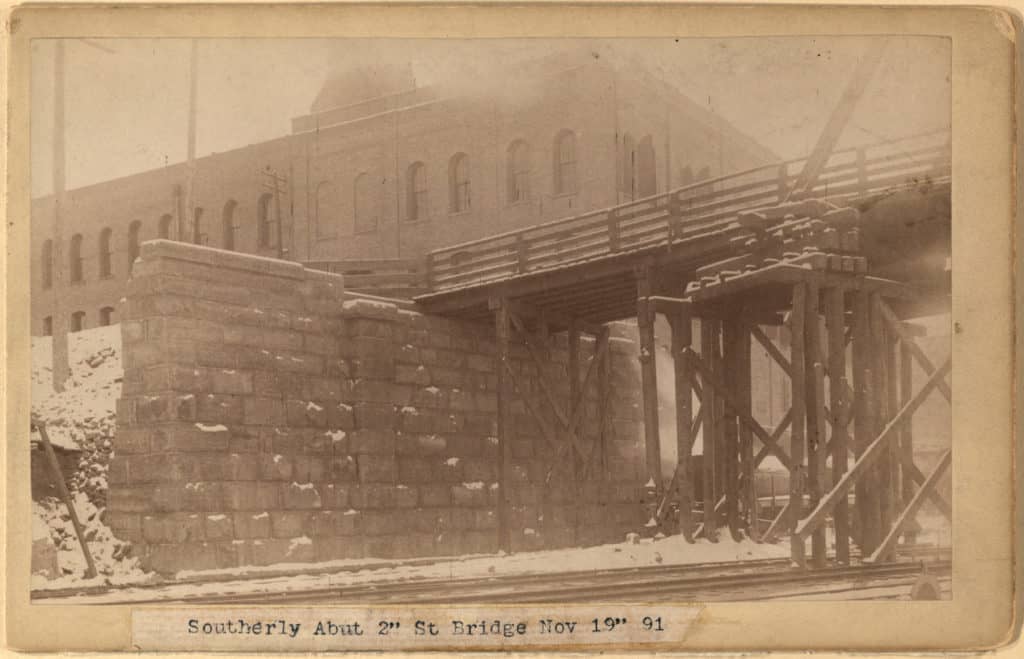
1891: Colonial Warehouse in the background as a new 2nd Street bridge is built to help horses and buggies get over the tracks. Photo: Hennepin County Library
Back then, horses pulled the streetcars, but prominent businessman Thomas Lowry bought the company with plans to modernize operations and replace the horses with a cable-drawn system.
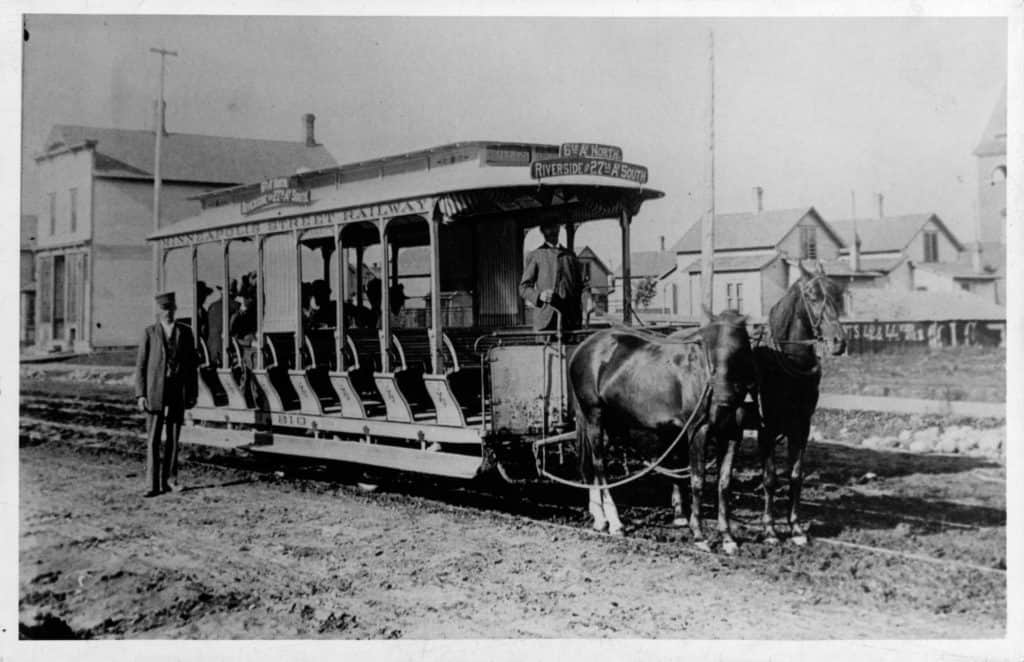
Photo: Hennepin Co. Library
To get started on his futuristic vision, Lowry added a brick power house to the south end of this building in 1889 with massive steam generators to power the cable cars. But ultimately, the city rejected Lowry’s plan and opted to go with electric streetcars instead. The building’s steam generators were dismantled and it sat mostly vacant for three years.
In 1908, a wholesale grocery firm run by two brothers, W.B. and W.G. Jordan, bought the building and expanded it, adding the top two floors. They dedicated about half the building to grocery distribution and coffee roasting, while also filling the old power house with a new firm, the Power Equipment Company, selling mechanical supplies for grain elevators and mills.
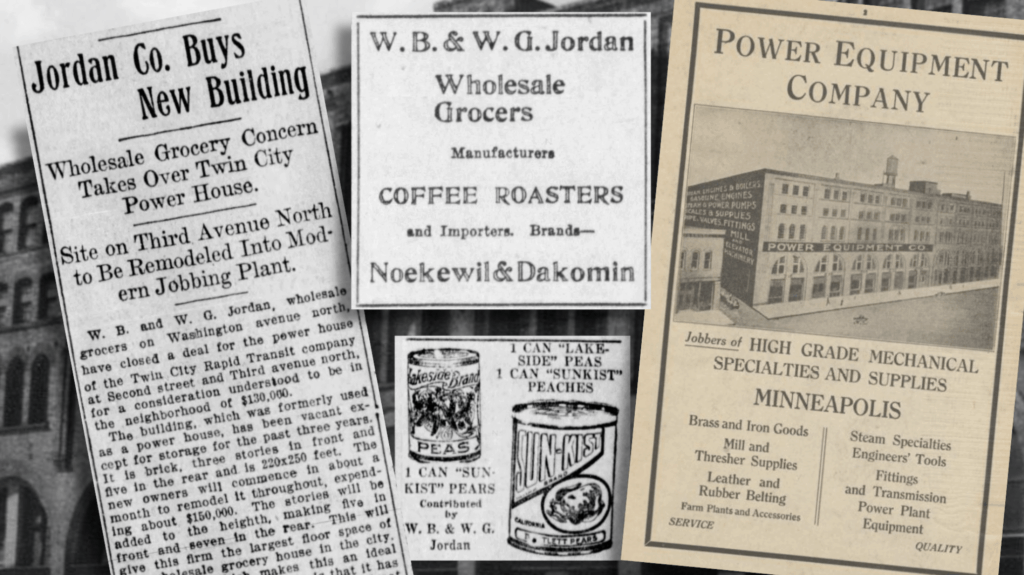
In 1913, another company, named Colonial Warehouses, Inc., started doing business here as well. It became a significant distributor of alcohol and tobacco in the early 30s when Prohibition ended. But judging by the many newspaper clippings from that era, its involvement with alcohol storage and distribution began before that.
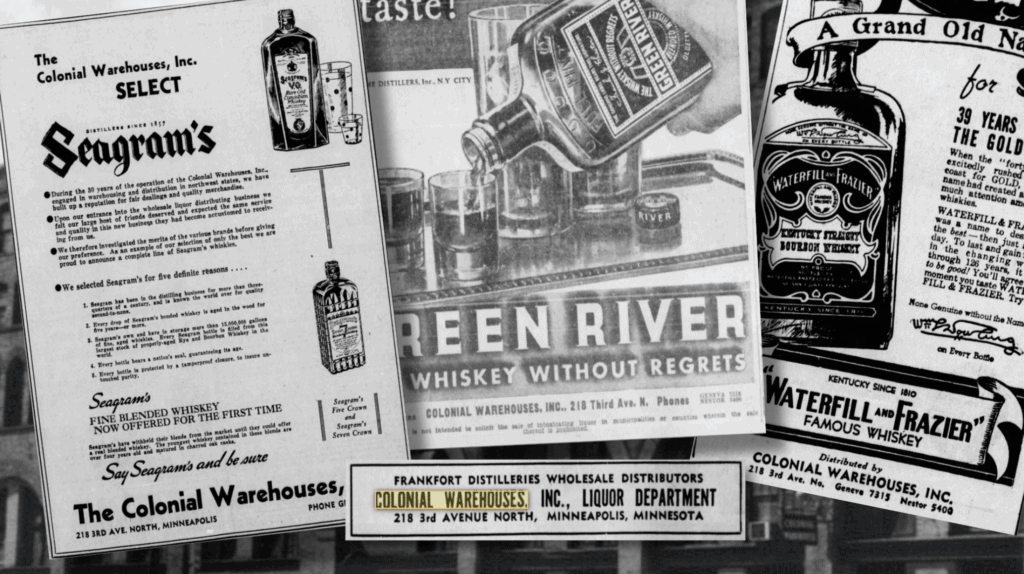
From federal raids to robberies to murder, the warehouse was frequently in the newspapers in the 1920s.
May, 1922: Truck driver William S. Allen was murdered near his home by two men in a stolen red roadster. Police theorized he may have been targeted by rum running gangsters because he had a key to Colonial Warehouse, where it was widely known that alcohol was stored.
December, 1922: Truck driver Arthur Tessmann was hijacked by four bandits posing as federal Prohibition agents shortly after leaving Colonial Warehouse with 75 cases labeled “Talcohol” (police said it was really whiskey). A car passed him on Washington Avenue and stopped in front of his truck, forcing him to halt. He was led at gunpoint into the car with three of the bandits while a fourth drove the truck in a different direction. Tessmann was thrown from the bandits’ car in St. Paul.

August, 1923: Prohibition agents raided train cars on the Colonial Warehouse tracks filled with 4,000 cases of alcohol labeled “body rub” and “hair tonic” which they believe were destined to be redistilled by bootleggers into alcoholic beverages. It was described as the largest Prohibition enforcement raid yet in Minneapolis.
October, 1925: Federal agents seized 6,250 cases of “body rub” alcohol stored at Colonial Warehouse, shipped in from Chicago. A judge ultimately ordered those cases to be returned to Chicago.
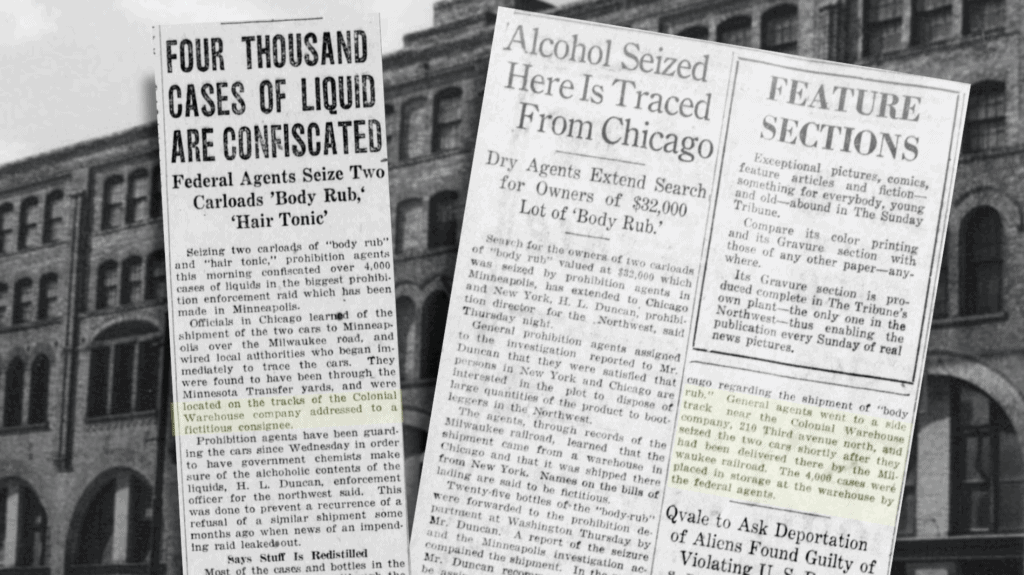
March, 1927: Contempt charges were filed against the Colonial Warehouse president, vice-president and five others, after the 6,250 cases did finally arrive back in Chicago—but emptied of alcohol and filled instead with water. One of the defendants from the shipping company ultimately pleaded guilty and charges were dropped against the other six.
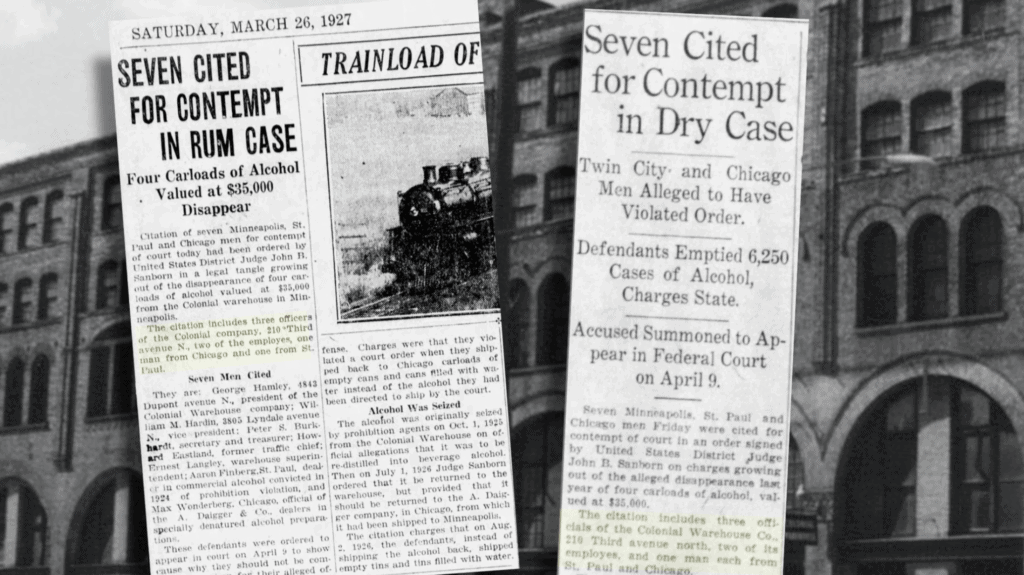
After Prohibition ended, there were still articles about truck drivers being hijacked and robbed of their tobacco shipments after leaving Colonial Warehouse in the mid-30s.
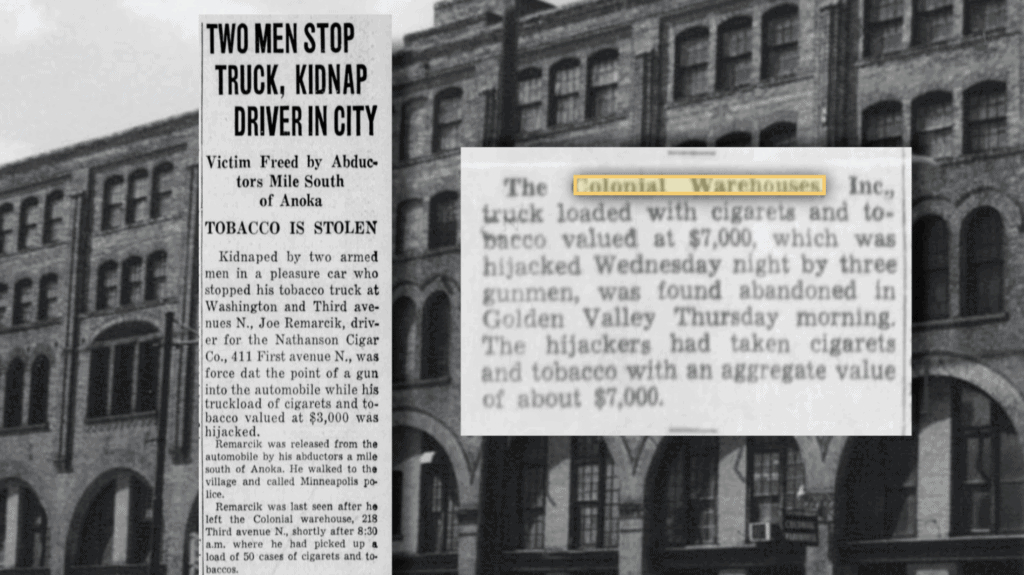
Meanwhile, a newly-formed company, Jordan Stevens, bought out W.B. and W.G. Jordan in 1926, taking over the wholesale grocery operations here. It drew positive publicity in 1938 with a modern new cold storage plant, allowing it to supply fresh fruits and vegetables to stores year-round: “apricots and bing cherries from Washington, peaches and plums from California, watermelons from Texas and bananas and citrus fruits all the year round.”
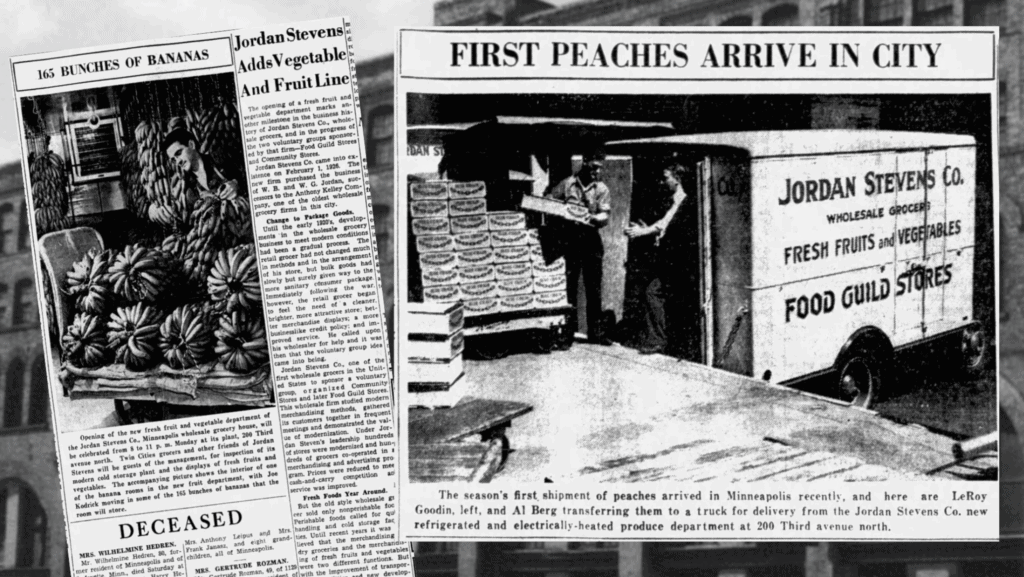
And the tobacco distribution drew positive attention as well during World War II, with this 1943 mention in the Minneapolis Star Journal: “Many of the cigaret orders for boys in the service go through the Colonial Warehouse here. They got an unusual one the other day. Employees in the Douglas Aircraft company in California chipped in for smokes for the Yanks, collected a total of $1,300 and now 40 cases of cigarets are en route to the boys in Alaska.”
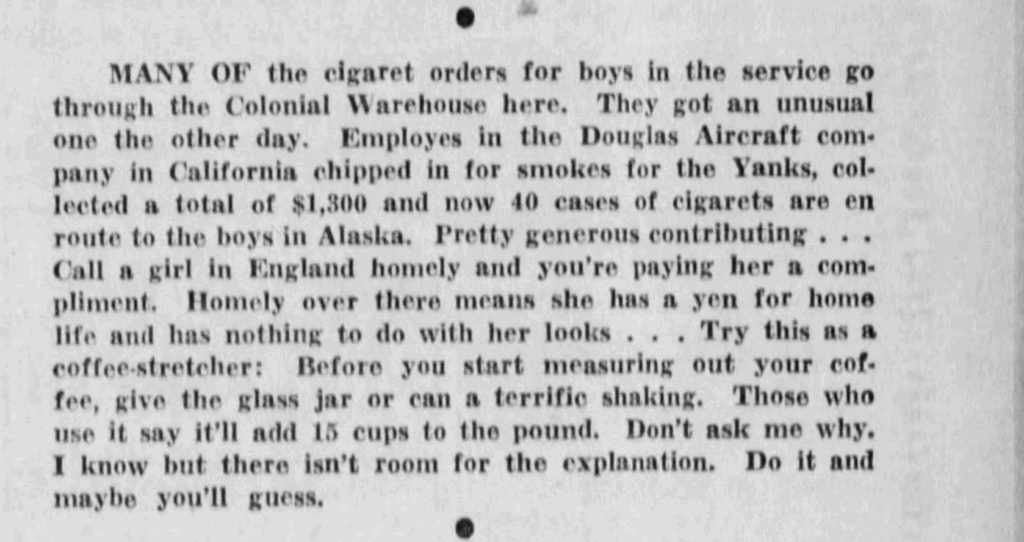
In 1951, Jordan Stevens sold its grocery business and bought out Colonial Warehouses, Inc., using the building as a public storage warehouse and retaining the Colonial Warehouse name.
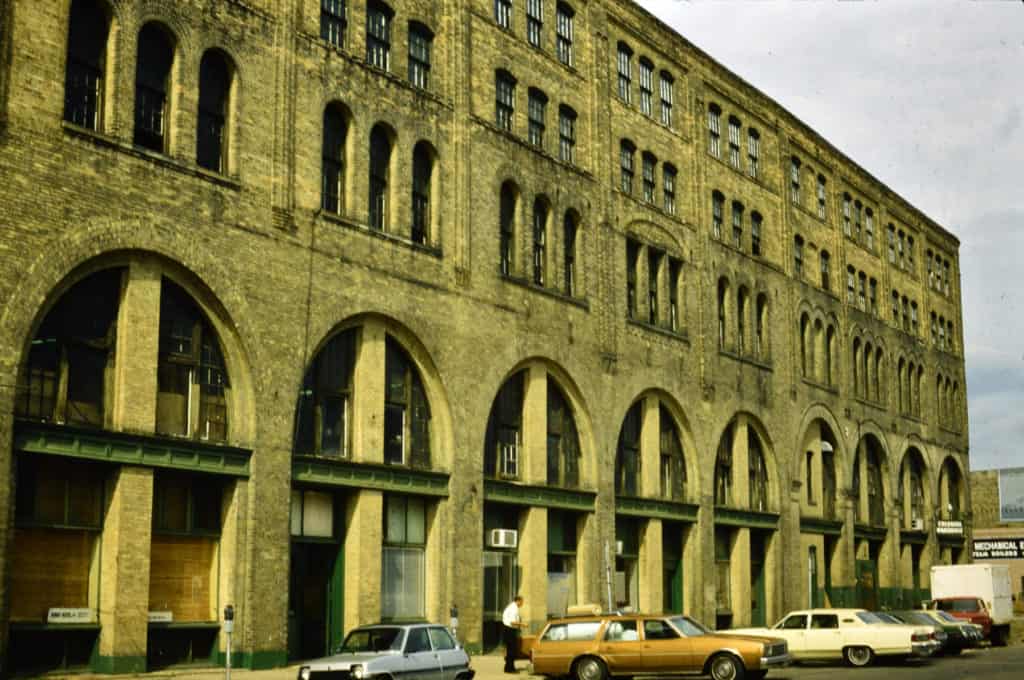
1980s photo: Hennepin County Library
The building went through a comprehensive renovation in 1995-96, with new windows, updated heating and other mechanical improvements to create new office and retail spaces.
City photos from 1998 show an eclectic mix of tenants from antique and record dealers to a fledgling museum known as House of Balls (art made from bowling balls among other things). Plus, a coffee shop that would become a long-time favorite: Moose & Sadies.
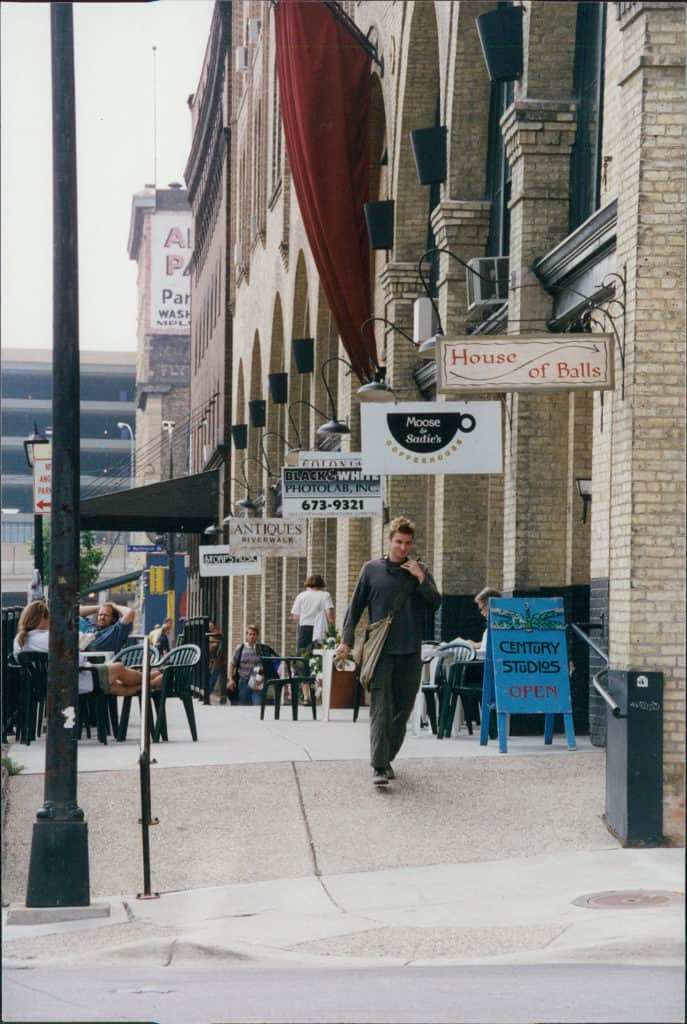
1998 photos: Hennepin County Library
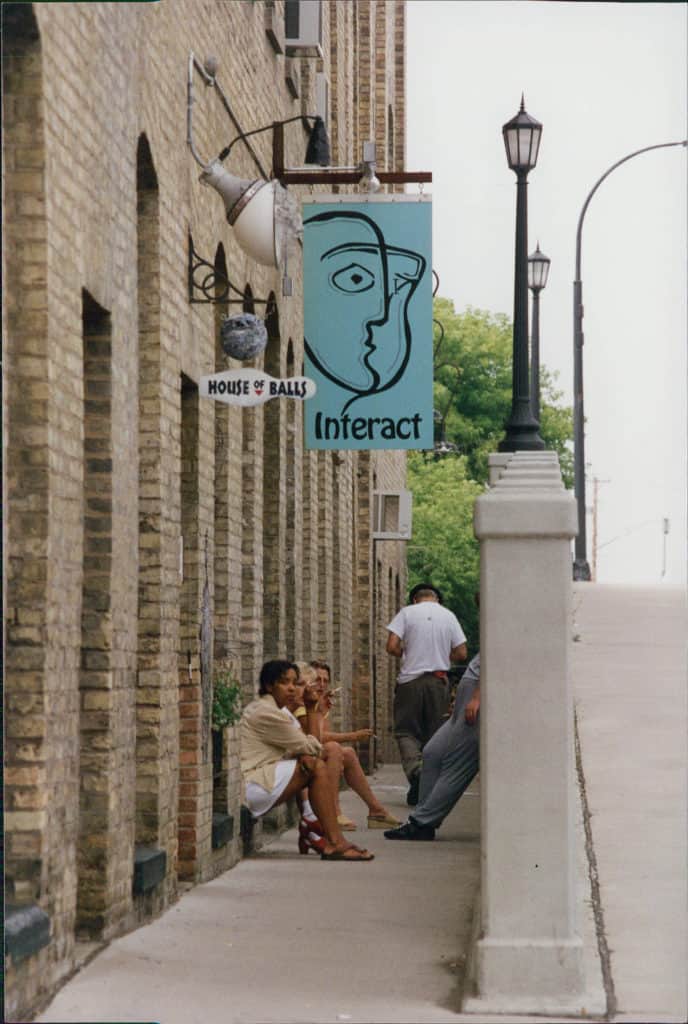
You can check out several more pages of local history in our Historic North Loop section.
By Mike Binkley, North Loop Neighborhood Association
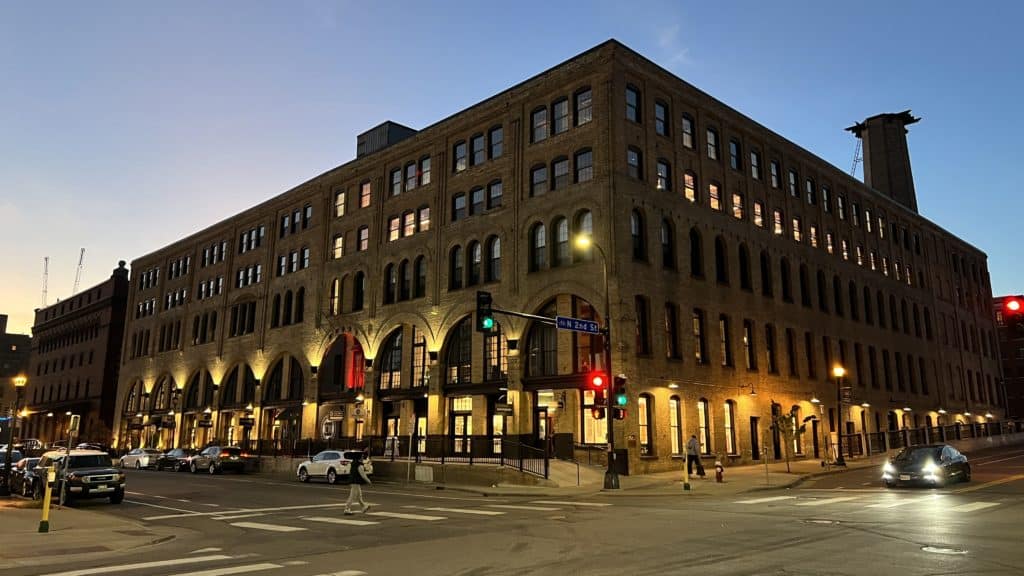
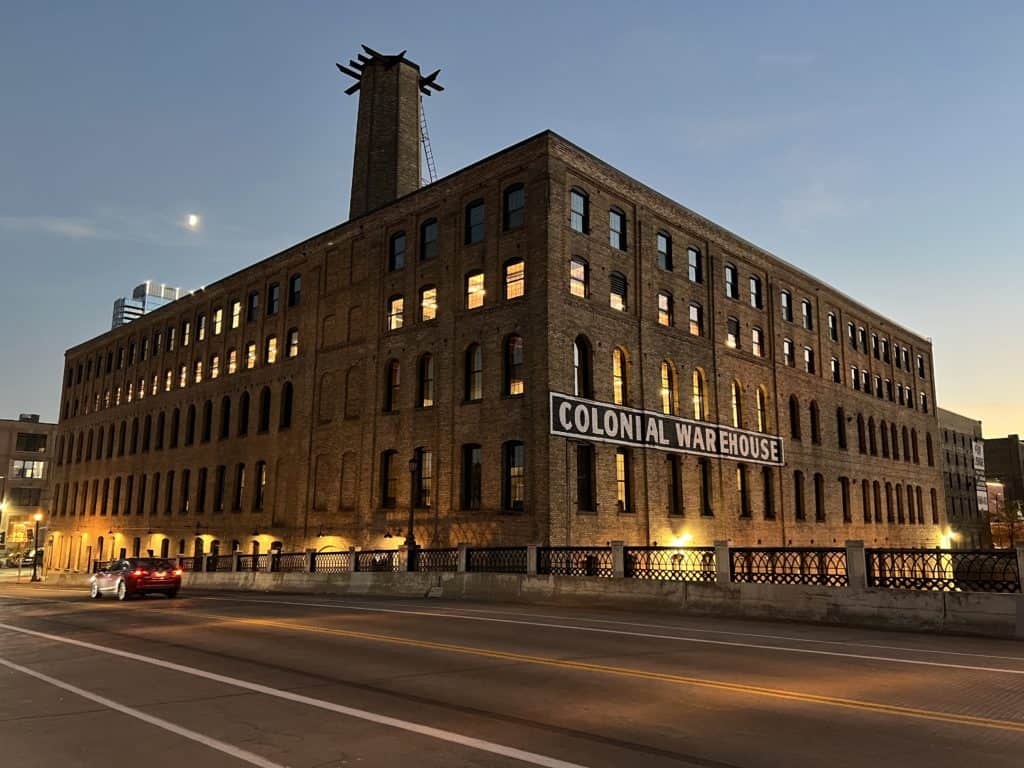
2022 photos by Mike Binkley

